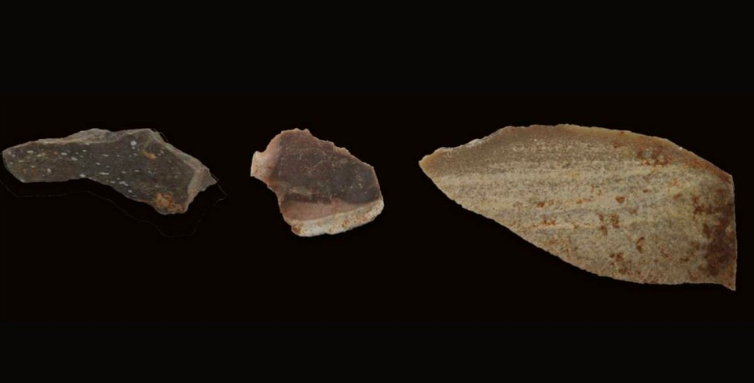
At a Glance
- Use of controlled fire was probably the most defining moment in the evolution of early humans.
- Using spectroscopy and AI tools, researchers found that early humans understood of the effects of heating the stone.
- The current study is among the earliest evidence that show hominins used fire to make tools more than 300,000 years ago.
Use of controlled fire was probably the most defining moment in the evolution of early humans. It was not just a mere technological advancement but was the starting point of everything we associate humans with—migration, civilisation, culture or language. But, when did we start controlling the fire? We may be getting closer to finding a definitive answer.
A new study, published in the journal Nature Human Behaviour, shows that human ancestors in the Levantine region—countries along the eastern Mediterranean shores—used fire at controlled temperatures to make tools around 300,000 years ago. Using the cutting edge technologies like the Raman spectroscopy and AI modelling, researchers at the Weizmann Institute of Science and Tel Aviv University in Israel found that early humans had a good understanding of the effects of heating the stone before flaking it into blades.
“And that (controlled fires to make tools), is technology, as surely as our cell phones and computers are technology. It enabled our ancestors to survive and thrive,” says Dr Iddo Pinkas, co-author of the study, in a statement from Weizmann Institute.
Evidence suggests that Homo erectus—the first human ancestor to spread across the world—made use of the fire as early as a million years ago. Many burnt tools from the Late Lower Palaeolithic (420,000 to 200,000 years ago) also bear testimony to the fact that early humans in many parts of the world used fire during these periods. However, it was unknown whether the exposure to fire was random—like caught in the middle of a forest fire—or whether these early human ancestors controlled fire to create tools.
The current study conclusively proves that human ancestors did control fire at least 300,000 years ago in the Middle East region. Examining the tools from Qesem Cave in central Israel, the researchers found that blades were heated to a lower temperature of 259°C than flakes (413°C), while the pot lids were exposed to an even higher temperature of 447°C. The scientists replicated similar heat conditions in labs and found that controlling the heat levels of flint can improve blade production.
Earlier, studies have pointed at similar use of controlled fires to make tools around the same time in North African regions like Morocco. Research also suggests that somewhere between 300,000-400,000 years ago, the primary prey of our ancestors also changed—from elephants to fallow deer—either a result or cause for a switch in the toolkit used, towards finer artefacts.
The current study is one of the earliest evidence of the use of controlled fire. However, scientists still have no clue how this skill of tool-making using controlled temperatures spread across different regions later on or how exactly they controlled fire. For the study, the researchers used a combination of spectroscopy and AI machine learning to analyse the tools. The results conclusively prove that ancient hominins—common name for modern humans and the extinct members of our family tree—developed sophisticated technologies using fire for making tools more than 300,000 years ago.
The study was published in the journal Nature Human Behaviour on Monday, October 6, 2020, and can be accessed here.
